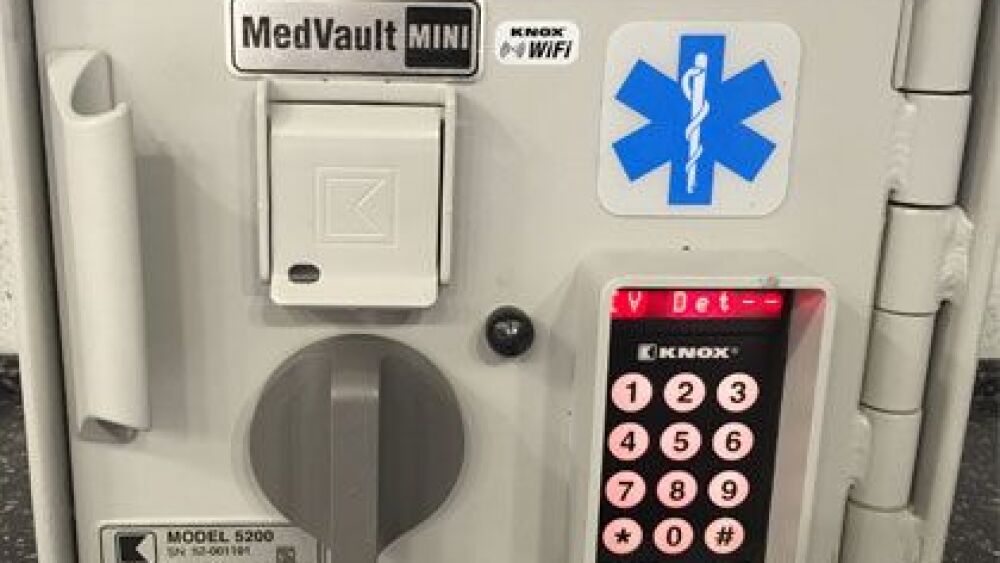This article, originally published on Nov. 17, 2014, has been updated with new information
By Brian LaCroix
A few years ago one of our paramedics, out of fear of being discovered, called a manager to admit to stealing narcotics.
A few days earlier a different crew had alerted their supervisor that the narcotic vials they were assigned for their shift “looked funny” – they were right. The department launched an investigation and managers began double-checking our controlled substance inventory and asking questions about security.
Word was out among the crews that something was amiss; it turns out, something had been amiss for weeks.
Months earlier, following an orthopedic injury, a paramedic (we’ll call him Jesse) had become addicted to prescription opioids. After returning to work, and no longer able to obtain drugs by prescription, he turned to rummaging around sharps containers and sifting out the small remnants of drug from near-empty vials of Morphine and Dilaudid.
I consider this akin to digging cigarette butts out of an ashtray. This person was desperate.
Soon that wasn’t enough, so Jesse started stealing drugs sanctioned for the ambulance, carefully removing them from vials and replacing them with water. Later, when confessing the entire scheme, he acknowledged that it had become impossible, even for him, to distinguish between vials that had been tampered with and those that had not.
The aftermath led to the involvement of multiple agencies including the federal Drug Enforcement Administration, the Minnesota State Department of Health, the Board of Pharmacy, the EMS Regulatory Agency and local law enforcement. Unfortunately, the story didn’t end there.
Our organization sponsored Jesse’s attendance at a long-term in-patient chemical dependency facility. But a few months after the initial incident, and weeks after discharge from rehab, his addiction raised its ugly head again.
After sneaking into an ambulance base, Jesse was discovered by two paramedics hiding on the apparatus floor. Police were called and he was once again in the hands of legal authorities.
It was presumed that Jesse was waiting for the crew to get a call so he could access the waste bins. It was another betrayal and a sad epilogue on the power of addiction.
In the end, Jesse, who had been a high-performing employee, lost everything.
Have a plan in place for drug addiction at your agency
Addiction is powerful. It ruins lives and carries the potential to negatively impact our patients, our communities, and the organization’s reputation. And, it can shake a department to its core.
In April 2014, USA Today wrote: “America’s prescription drug epidemic reaches deep into the medical community. Across the country, more than 100,000 doctors, nurses, technicians and other health professionals struggle with abuse or addiction, mostly involving narcotics such as oxycodone and fentanyl.”
Five years later, the opioid epidemic is even worse.
Prescription drug addiction frequently leads to drug diversion in the medical workplace, and can lead those who are addicted to seek out more readily available street drugs, such as heroin.
The experience taught us that all services authorized to carry controlled substances should have prevention, detection and investigation policies in place to help mitigate narcotic diversion.
Those practices also need to be monitored and updated on a regular basis. Intelligent, but desperate people addicted to these drugs will always be looking for new ways to circumvent security strategies. The need to constantly review and revise your risk mitigation strategies never goes away.
No ambulance service, hospital, clinic or other health care institution where controlled substance are stored, used, or wasted, is exempt from this potential calamity.
Management should also create awareness among staff to recognize and report anything that seems out of order — even impairment among co-workers.
Organizations benefit from candid encouragement of self-reporting for anyone who may be struggling with addiction, and having strong and supportive treatment programs available when possible to preempt diversion in the first place.
Trust, but recognize Provider vulnerability to opioid addiction
Sadly, in my career as an EMS leader, I’ve had staff members who have looked me in the eye and told me bald-faced lies — and it hurts.
For EMS leaders, the providers in your care typically work hard and are good people. But sometimes they screw up, and when they do it can feel very personal. It’s like a punch in the gut, as if you’ve been cheated on.
One of the more difficult balancing acts is to be both an advocate for employees as well as an overseer of their activities. I believe it’s a good thing to trust people, but I’ve learned that there is a healthy balance between blind trust and clear boundaries.
Having said that, I choose to trust, but I try not to be blind. By the very nature of the work they do, EMS practitioners are among those vulnerable to addiction.
Having a plan in place to help navigate the inevitable frailties of human beings is an important strategy; like an MCI response, you may not be at your best at making decisions when emotions are high and your trust is challenged. It allows you to take action with confidence and ensures that your organization, employees and patients will be well cared for.
About the author
Brian LaCroix, a former paramedic, is president of Allina EMS, a division of Allina Health Care, based in St. Paul, Minnesota. He serves on the board of the National EMS Management Association.












